From the Field
January 16:
Jared Clarke reports from our recent tour to Newfoundland:
Our popular “Newfoundland in Winter” tour has drawn to a close for yet another year, with five intrepid birders braving the elements to score some wonderful winter birds. Participants came from points south, east and west to enjoy the diversity of northern species that call this island home – and they were not disappointed.
Early surprises came in the form of rare visitors from very different directions – an ABA-rare Ruff looking very out of place amongst the snow & ice (photo below), ...a long-staying Pink-footed Goose from Europe, and TWO Yellow-throated Warblers from much further south.
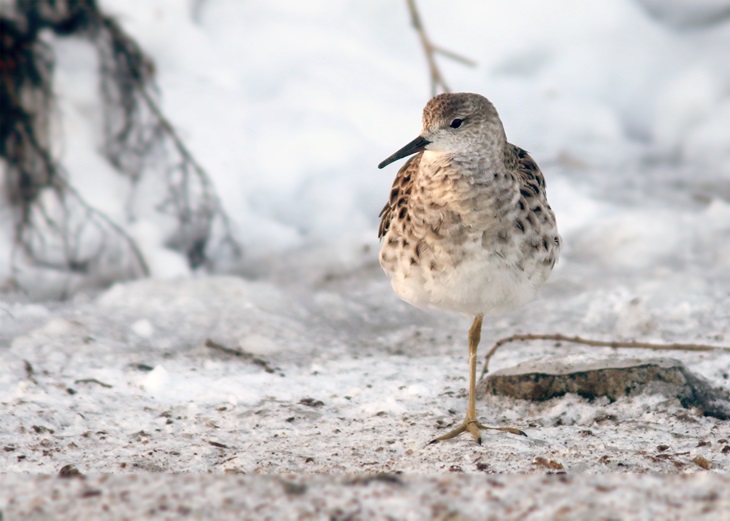
Always a highlight, Dovekies (aka “bullbirds” to local Newfoundlanders) put in an excellent showing and even allowed several very close views.
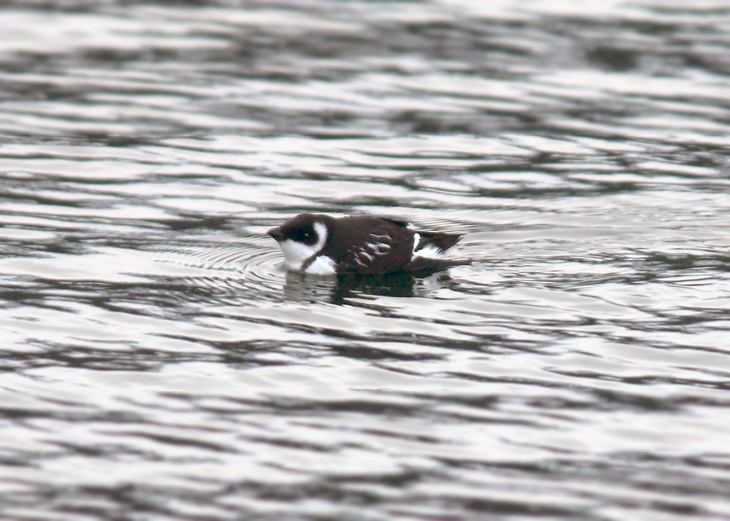
An encounter with three Willow Ptarmigan foraging on the snow white tundra was a special treat...
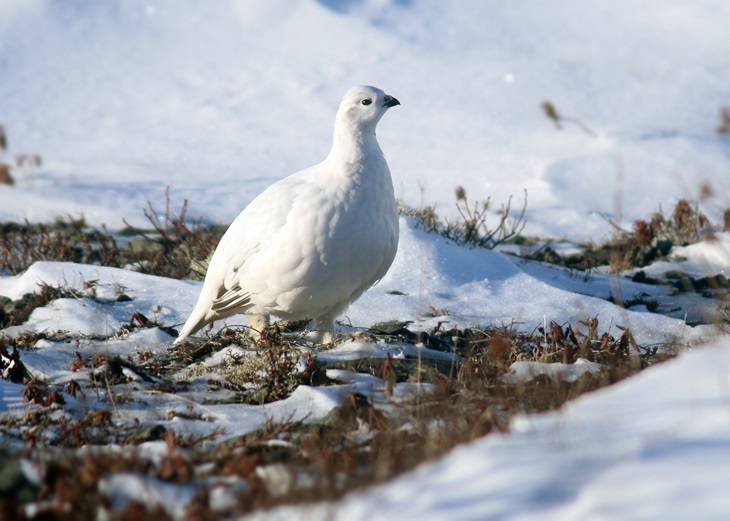
...as were other denizens of the north including Thick-billed Murre, Bohemian Waxwing (photo below) and White-winged Crossbill.
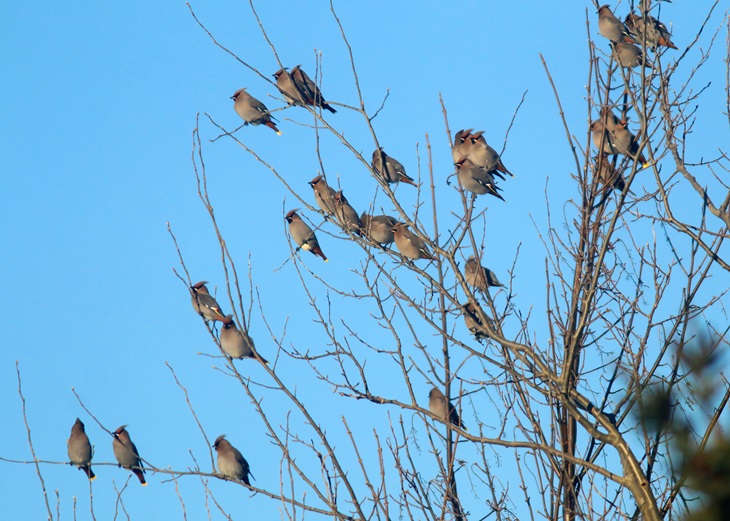
Local celebrities such as Great Cormorants, Eurasian Wigeon and several dozen Tufted Ducks were of course on full display. After a couple early misses, we also connected with a flock of 60+ Purple Sandpipers at the easternmost edge of the continent – a special moment for several of our guests and a fun way to wrap up a great week of birding in the North Atlantic!
Group at Cape Spear

December 20:
Fabrice Schmitt reports from a recent tour to Oman
What a fantastic trip we had to Oman! Starting in Salalah, we were able to explore the magnificent wadis at the foot of the mountains that encircle the capital of Dhofar, finding some of the species that would eventually be voted as the best birds of the tour, such as Arabian Partridge, Arabian Eagle-Owl, Desert Owl and Yemen Serin. However, the sighting that made the biggest impression on the group was a close encounter with a flock of Hypocolius found in an oasis in the middle of the desert. On that same day, we also had a memorable sighting of hundreds of Chestnut-bellied Sandgrouse coming to drink to a water hole while a few Greater Hoopoe-Lark quickly ran over the sand dunes!
The many estuaries we visited on this tour were full of migrating waders and larids, but it was at Bar-el-Hickam that we were all impressed by the thousands of wintering waders, including hundreds of Crab Plovers and Great Knots.
The pelagic trip from Mirbat was also very productive, with fine sightings of Jouanin's Petrel and Persian Shearwater, as well as a nice surprise Swinhoe's Storm-Petrel flying close to the boat.
In the north of the country, we also found some fine specialties, such as Plain Leaf Warbler, Persian Wheatear and Arabian Babbler. Also present were some uncommon migratory species, such as Eastern Orphean Warbler, Pheasant-tailed Jacana, Pallas's Gull, and above all a vagrant Litle Bunting, found the exact same day and in the exact same location where Stephen Menzie found Oman’s first Reed Bunting 2019 during a similar WINGS tour! In addition to birds, we also enjoyed the interesting vegetation such as blooming Desert Roses and found some incredible creatures such as Carter’s Rock Gecko, the fast running ‘Sand Praying Mantis’, and even a Ruppell’s Fox. Oman is truly a fabulous destination to discover!
A report of the birds seen on the tour is available on eBird: https://ebird.org/tripreport/173625
A report of some of the plants and animals photographed on the tour is available on iNaturalist: https://www.inaturalist.org/projects/wings-oman-2023
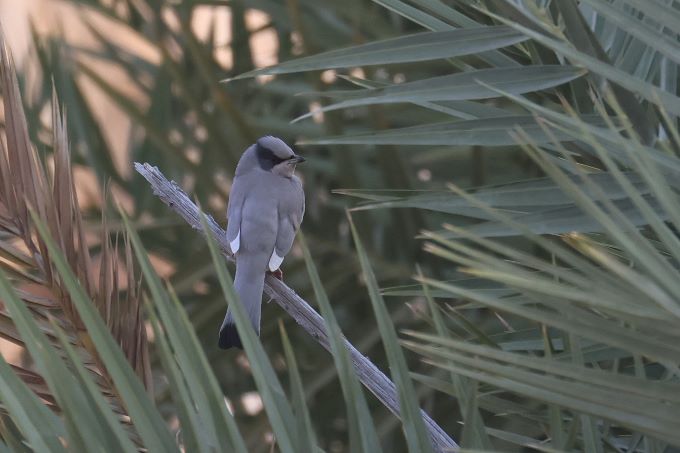
The only species in its family, the Hypocolius was voted as best bird of the trip!
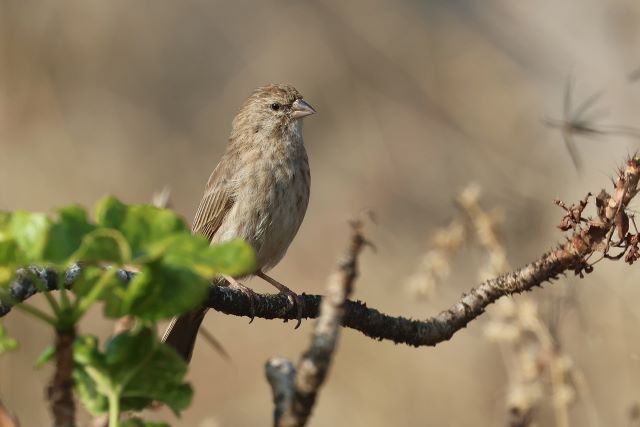
Dull is beautiful! Yemen Serin is one of the many Arabian Peninsula specialties we found during the tour.
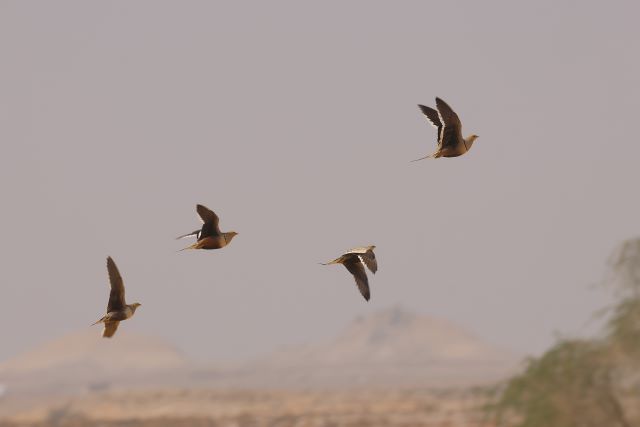
A few of the hundreds of Chestnut-bellied Sandgrouse seen coming to a water hole in the desert.
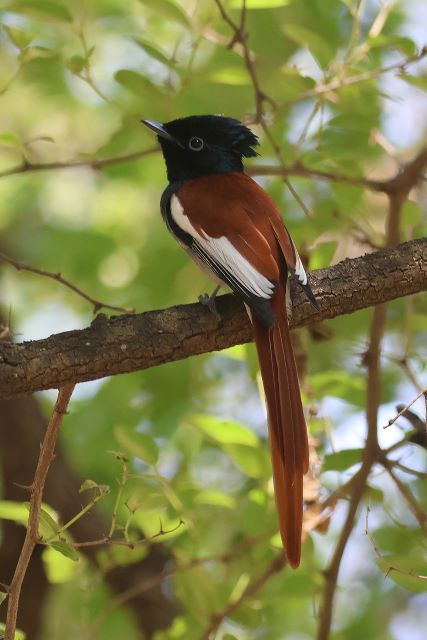
African Paradise Flycatcher is a common resident in the Dhofar region.
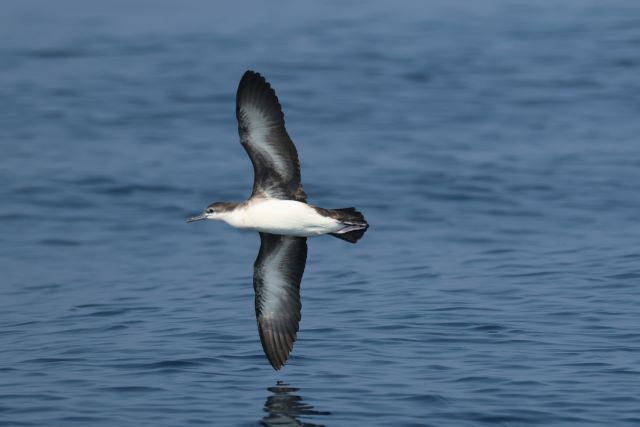
Persian Shearwater is almost guaranteed on our pelagic trip off Mirbat.
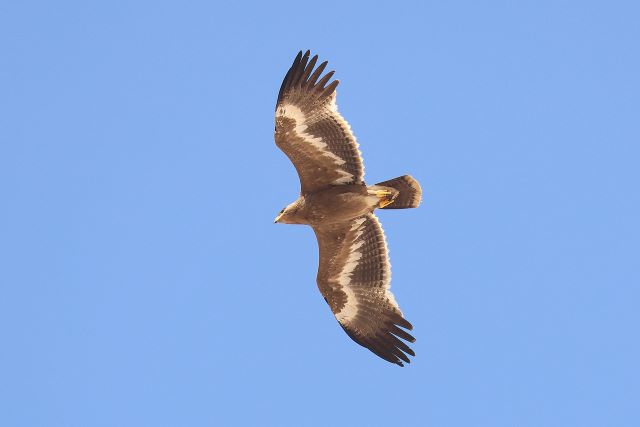
One of the many Steppe Eagles seen during the tour; here a first winter.
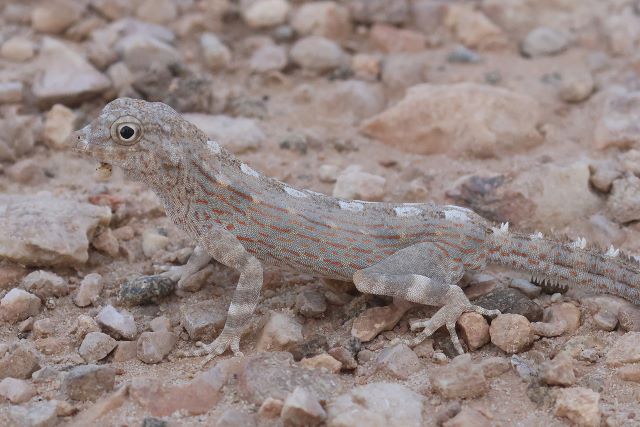
In addition to birds, Oman is a wonderful destination to look for amazing creatures such this Carter's Rock Gecko.
December 12:
Rich Hoyer reports on a recent tour to the Yucatan
The American Flamingo might be the Yucatan Peninsula’s most iconic bird, and on our recent tour to this region and the adjacent island of Cozumel we learned that the lawn ornament is no substitute for seeing the real thing. From distant splashes of shocking pink in the Rio Lagartos estuary, to ridiculously stretched-out birds flying over the mangroves, to an astonishing drive-up view of several birds almost too close to focus on, we experienced the essence of this beauty, voted favorite bird of the tour. Also memorable were all birds with Yucatan in the name – regional endemics such as the wren, the gnatcatcher, and the jay, all of which we saw well. Some of the sought-after regional endemics have more descriptive names – Gray-throated Chat and Yellow-lored Parrot were two that we enjoyed thoroughly. We also experienced a touch of the wider Neotropical region, with the likes of a stunning male Red-capped Manakin and several swarms of two species of army ants attended by multiple birds. One close swarm in a perfect viewing situation had us captivated for 40 minutes with about 10 species of birds taking advantage of the easy pickings (the birds eat critters flushed by the ants, not the ants themselves). It was also fun to become familiar with birds on their non-breeding grounds, having escaped the northern winter, such as a male Painted Bunting and many Magnolia and Black-throated Green Warblers, White-eyed Vireos, and not just a few Least Flycatchers. Then of course, there were more than just birds, such as blindingly blue Common Morphos, Crimson-patched Longwings, a giant Morelet’s Crocodile, and mind-numbing numbers of Central American Locusts in one of those swarms we had all only ever read about.
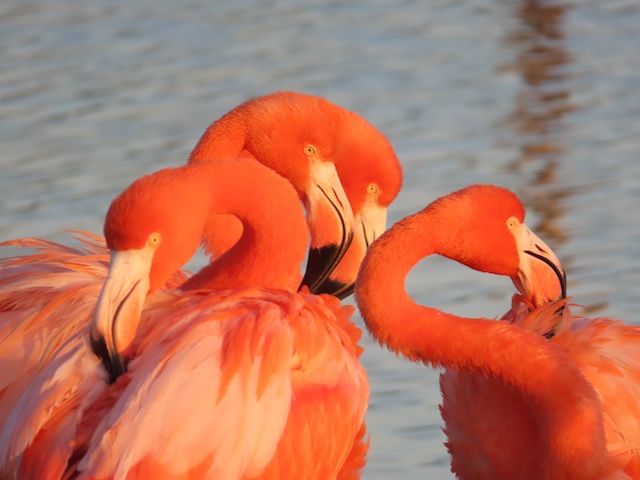
American Flamingos at such close range are unforgettable.
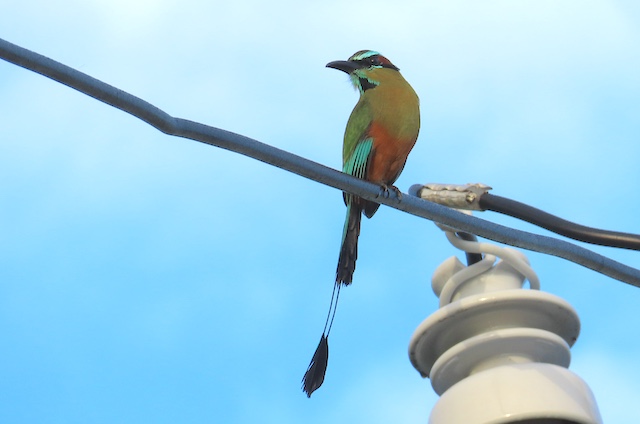
Seeing a Turquoise-browed Motmot perched on a powerline is not a sight you can prepare yourself for.
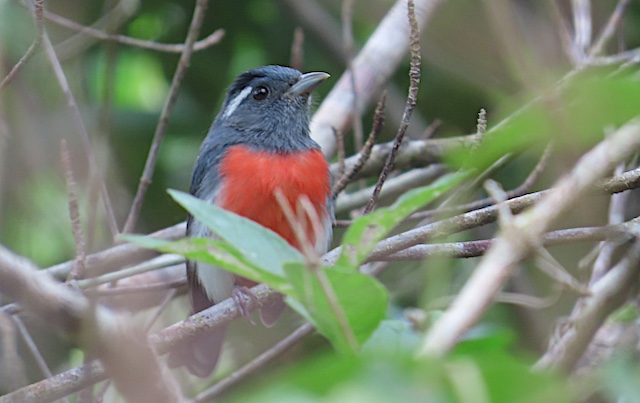
Pretty, adorable, and regional endemic all aptly describe the Gray-throated Chat.
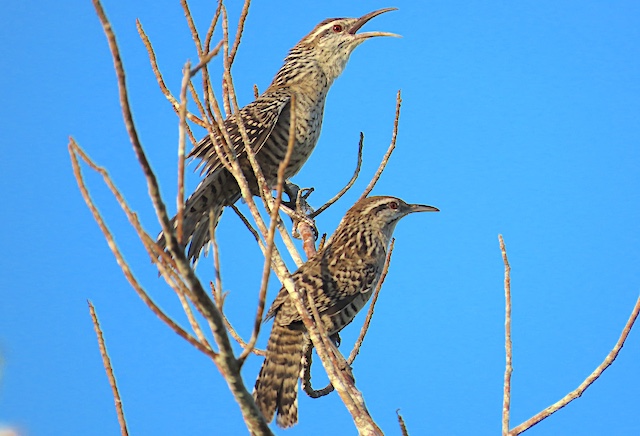
Yucatan Wrens recall the Cactus Wren of more northerly climes, but this regional endemic is quite distinctive with a fantastic duet.
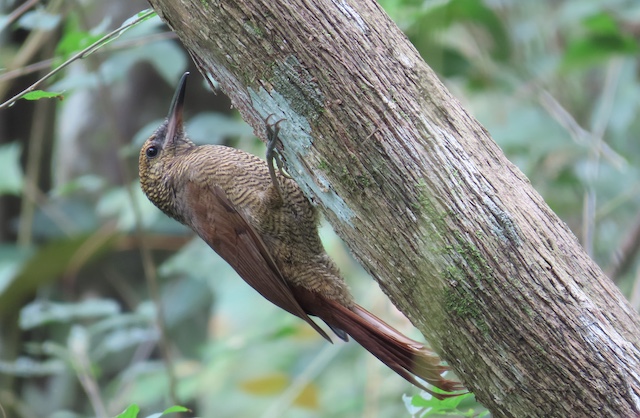
This Northern Barred-Woodcreeper was one of about 10 species of bird attending an ant swarm.
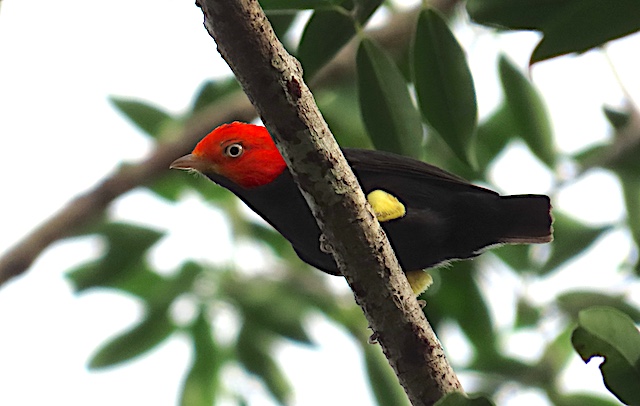
We were lucky to bump into this male Red-capped Manakin as he fed in a fruiting tree.
The most commonly seen butterfly on the tour was the lovely Crimson-patched Longwing.
December 5:
Ethan Kistler reports from Eastern South Africa
Steve Rooke and I recently finished the 19-day Eastern South Africa tour. Our route provided us with the opportunity to experience a variety of habitats and bird communities from sea level, along the Indian Ocean coast, to over 9400’ along Sani Pass in the Drakensberg escarpment. We tallied nearly 440 species of birds with some of the highlights being Striped Flufftail, three species of cranes, 47 species of raptors (eagles, owls, falcons, etc.), Cape Parrot, Drakensberg Rockjumper, around a dozen species of larks, the critically endangered Montane Blue Swallow, and a bonus Whinchat. The latter was a vagrant and only the 14th record for the country.
Mammals didn’t disappoint either. We successfully tracked down the “Big Five”: buffalo, rhino, lion, elephant, and Leopard, in addition to finding African Wild Cat, Meerkat, Spotted-necked Otter, and an unprecedented two Aardvarks! It’s not every day you see an Aardvark, let alone two, certainly not in the Kruger National Park on the same day! The 2024 Eastern South Africa tour is well anticipated!
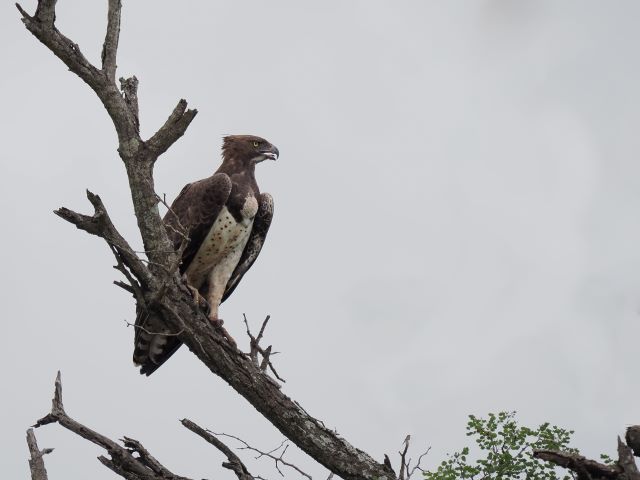
Martial Eagle was one of 47 raptors recorded on this tour. One of the largest eagles in the world, they have been known to take large pray including Impala and even lion cubs!
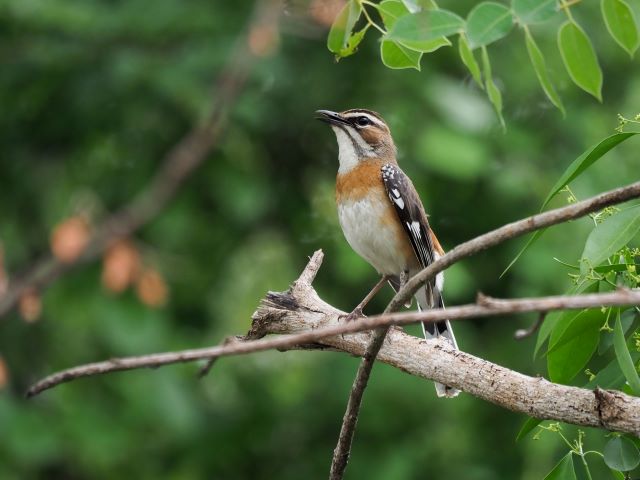
This Bearded Scrub-Robin posed nicely for us as it serenaded us in Kruger National Park.
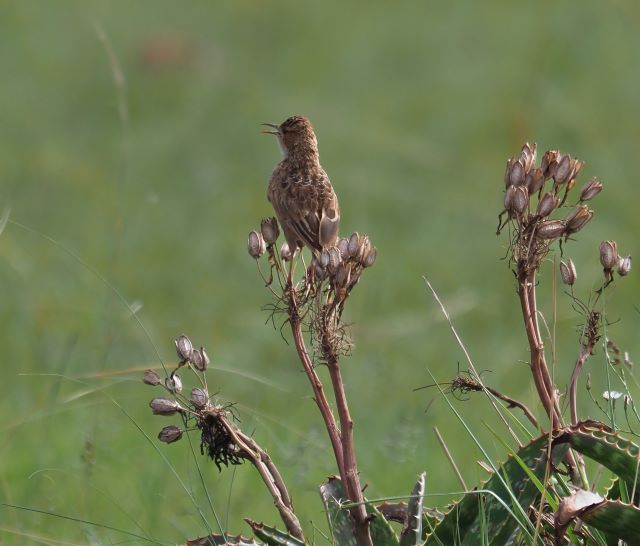
One of many species of larks in South Africa, the distinctive Spike-heeled Lark has a very short tail, and was seen close to where we had the endangered Rudd’s Lark.
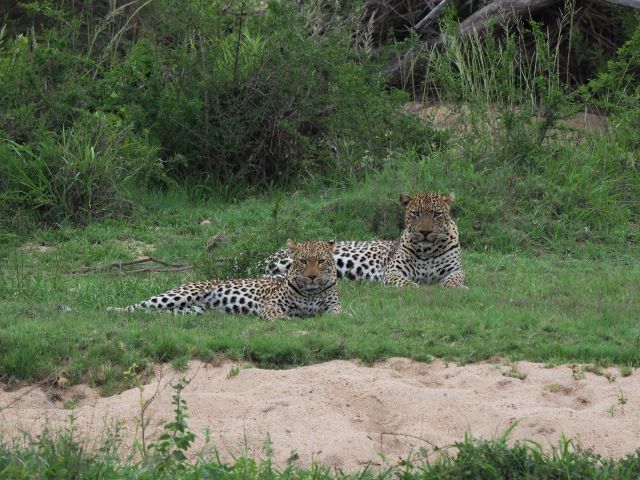
One of our mammal highlights, this mating Leopard couple clearly shows the remarkable size difference between male and female.
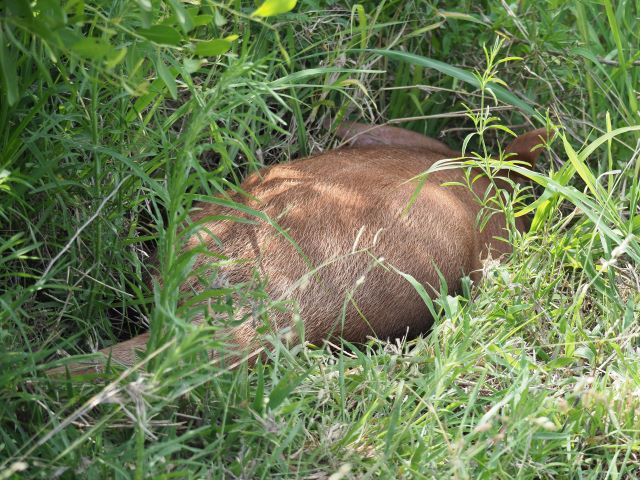
A once in a lifetime experience, we had this young Aardvark in the morning near Lower Saber Camp in Kruger National Park. We then found an adult on our night drive out of Skukuza Camp that same evening!
December 4:
Rich Hoyer recently returned from a wonderful tour in Bahia, Brazil
The Bahia, Brazil tour went beautifully this year, with great birds, fabulous scenery, amazing wildlife, and a very harmonious and diligent group of participants. Our bird list of nearly 375 species will be hard to beat in the future, and it made my job enjoyable to have all the participants so vigilant and active in spotting birds and helping to get each other on everything. When it comes to choosing the favorite birds of the tour, it’s often a little challenging to remember back nearly two weeks, so the Indigo Macaw experience on our second day near Canudos clearly made a lasting impression. With around 40 birds raucously flying around in a picturesque sandstone canyon landscape, and several pairs perched and squabbling over potential nesting nooks, it was a side trip to the north of the state well worth the effort. Farther south, the Chapada Diamantina area, with its stunning landscapes and hyper-local distributions of strange plants and animals, gave up a few of its specialties, such as Sincora Antwren and Collared Crescentchest, and we lucked out with three species of tinamous seen, such as two Spotted Nothuras in the stunted shrubland south of Mucugê. The pair of Burrowing Owls at the Byzantine Cemetery right by town were also a big hit. Farther south yet, the area near Boa Nova offered an amazing contrast in the rapid transition of ecoregions from the dry Caatinga to the wet Atlantic rain forest, and here we enjoyed Swallow-tailed Hummingbird and Pygmy Nightjar in the former and Spot-breasted Antvireo and Striated Softtail in the latter – in birding sites only 25 minutes from each other. The moths, spiders, and plants at Serra Bonita reserve were spectacular, and the bird soundscape here was fabulous. We heard the amazing descending whistle songs of Sharpbill almost everywhere, so it wasn’t a surprise that we had great views of several; a big surprise though was getting great views of an Ash-throated Crake that inhabited the overgrown pasture of the farm located in the middle of the otherwise forested reserve. Our drives were often long between hotels, but we broke them up with quick stops at wet areas, a result of what had apparently been a late and abundant previous rainy season. By far the most exciting highlight at one of them was a stray Pinnated Bittern, far from its southern Brazil breeding distribution. We ended the tour at the tropical coastal resort town of Porto Seguro, sort of the Miami of Brazil, and the large, protected track of lowland forest of Estação Veracel added several nice endemics to the list. The main highlight here though was a pair of Mottled Owls (a likely split from Central American birds), one of which perched low in the understory much closer that we had originally thought. I look forward to returning here in 2025 a tour that can be taken in combination with the wonderful birding in the neighboring state of Minas Gerais.
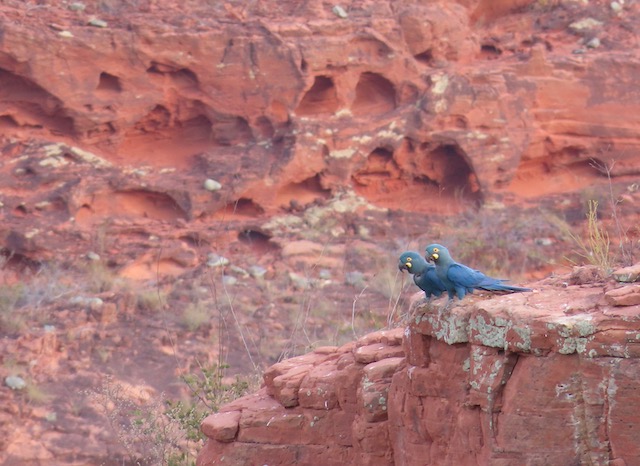
This pair of Indigo Macaws wasn’t the closest one we saw, but their perch above the cliffs gives a glimpse of the spectacular scenery they inhabit.
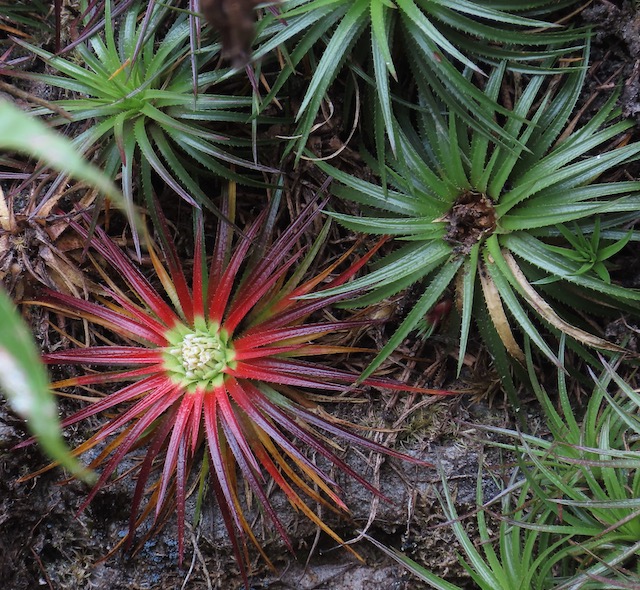
The plant life of Chapada Diamantina is famous among botanists, with new species being described all the time; this bizarre, highly localized bromeliad is Sincoraea mucugensis, named after the town Mucugê where we spent two nights.
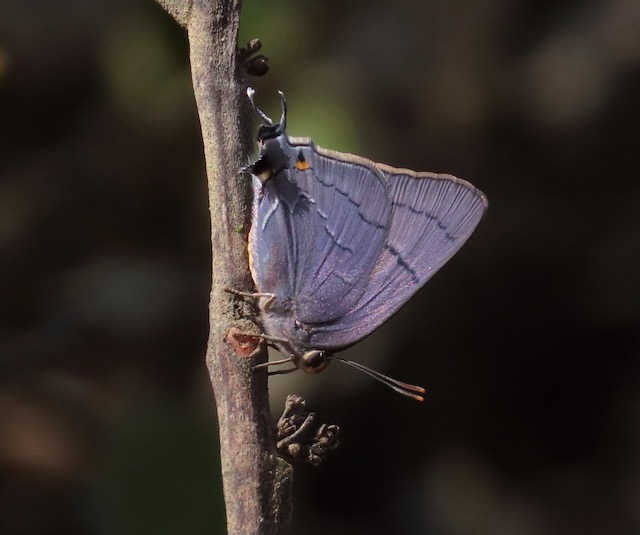
We did not see huge numbers of butterflies, as the rainy season was still a few weeks away, so it was fun to learn that this unusual looking Atlides hairstreak is an undescribed species that had never before been photographed in the wild.
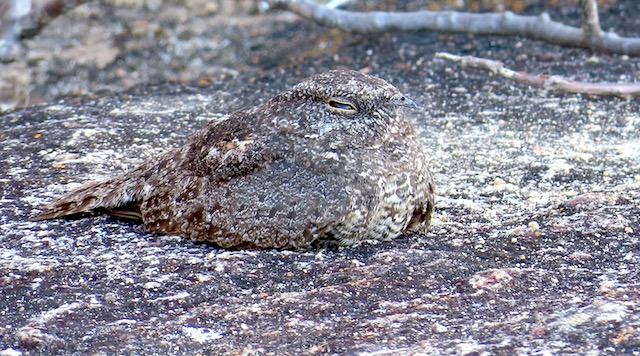
One can be forgiven for not spotting a Pygmy Nightjar sitting wide out in the open before it patters across the granite rock outcropping on its tiptoes, suddenly revealing its presence.
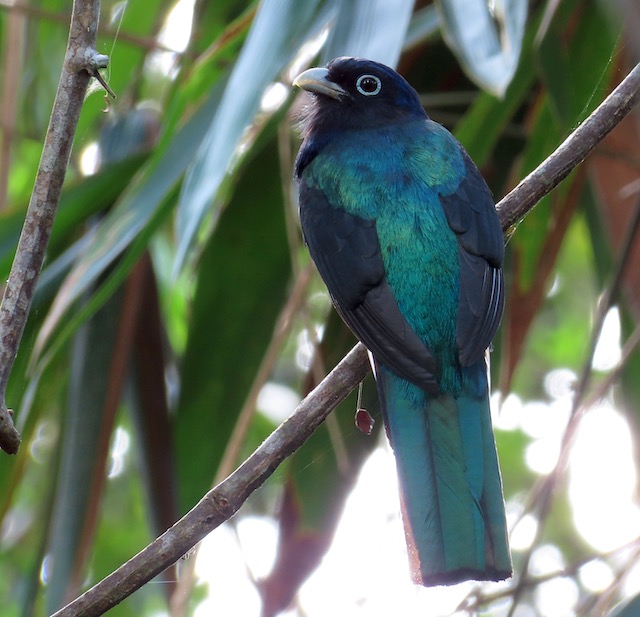
The Green-backed Trogon is as photogenic as any member of this gorgeous family of birds.
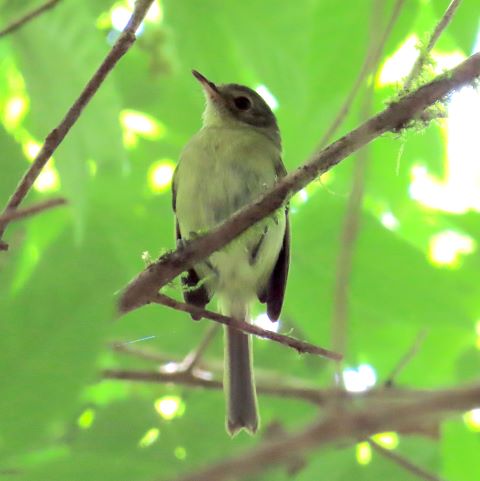
The highly localized Bahia Tyrannulet is difficult to detect and see well, so we were lucky to have experienced two of them at Serra Bonita.

Everyone was duly impressed with the variety and quality of food on this tour, with fresh salads and regional dishes offered at typical “self-service” lunch stops everywhere. Cláudia’s in Mucugê was one of the best.
November 16:
Southern Ecuador with Jon Feenstra
We are all home now after nearly two and a half weeks of birding the remote rainforests, cloudforests, deserts, paramo, roadsides, wetlands, lakes, rivers, valleys, and hilltops of southern Ecuador. We had mostly good weather and conditions throughout and ended up with a list well over 500 species of birds.
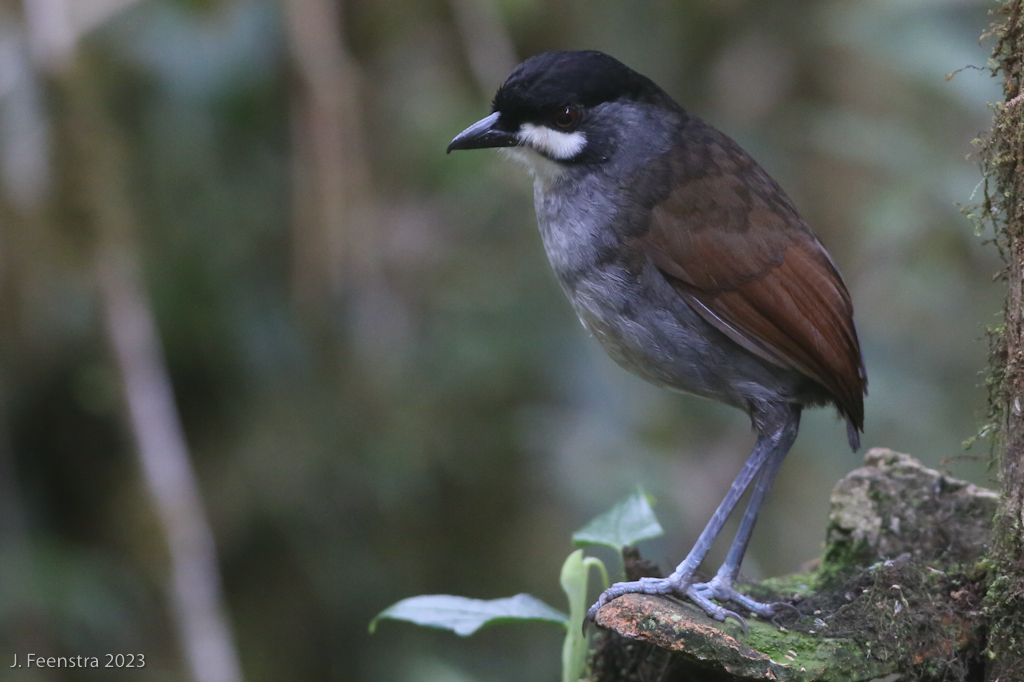
A group favorite was the Jocotoco Antpitta, an iconic species for bird conservation in Ecuador and just plain huge, weird, and charismatic.
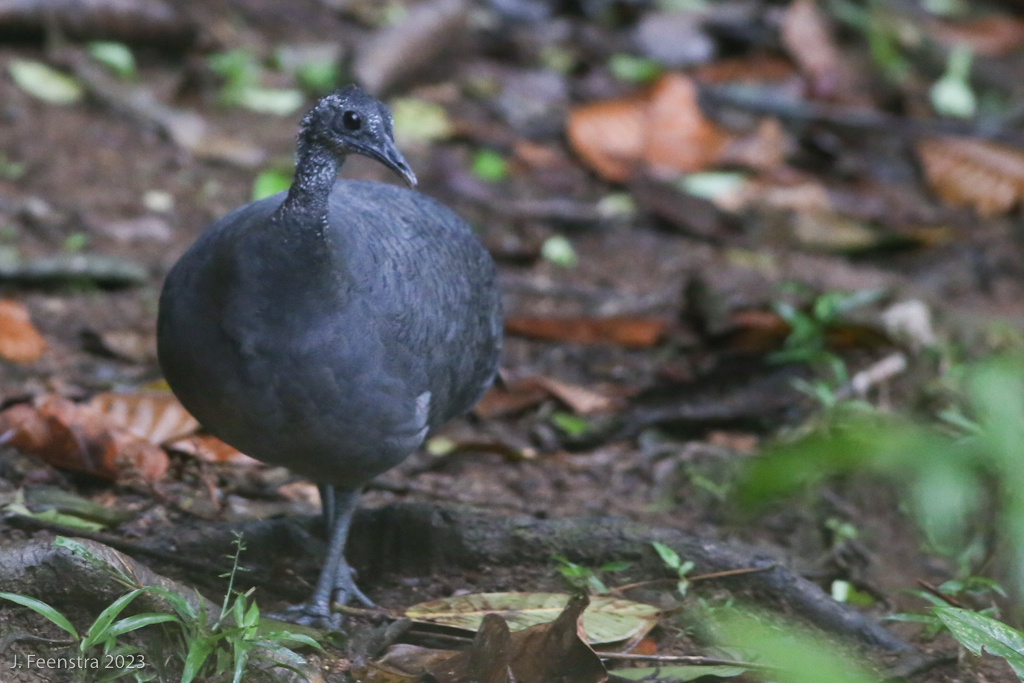
Another was also pretty strange-looking. A Gray Tinamou stalking a forest path for where the lodge staff throws out some corn kernels was part dinosaur and part watermelon with legs.
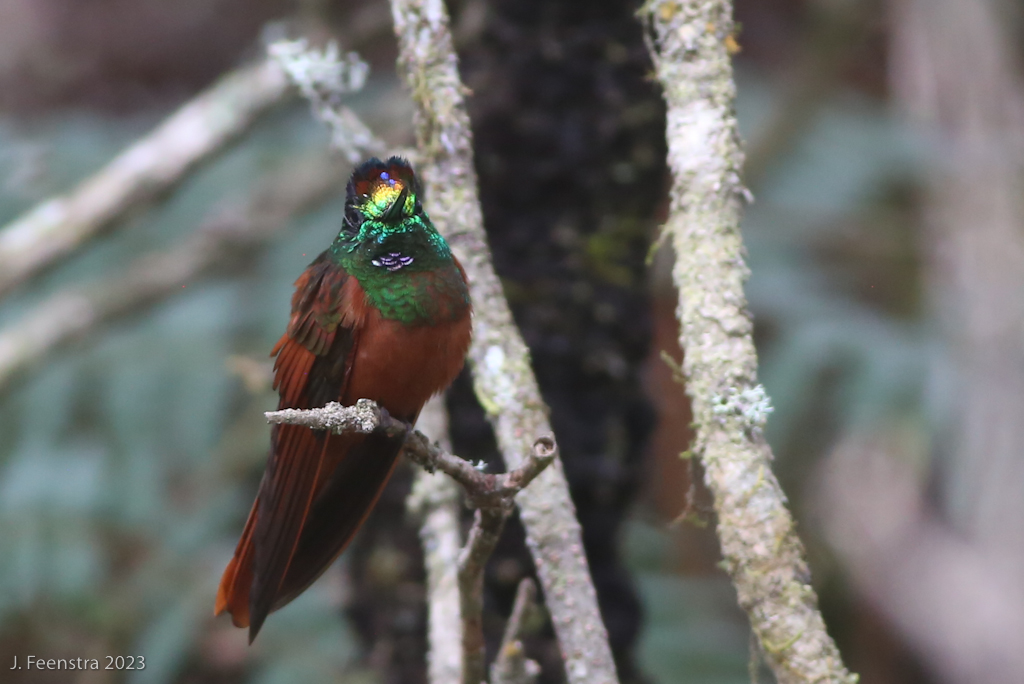
We saw dozens of species of hummingbirds, large and small. Often in the gloomy forest, hummingbirds just look black, but sometimes the sun hits them just right and they really pop, like this Rainbow Starfrontlet…
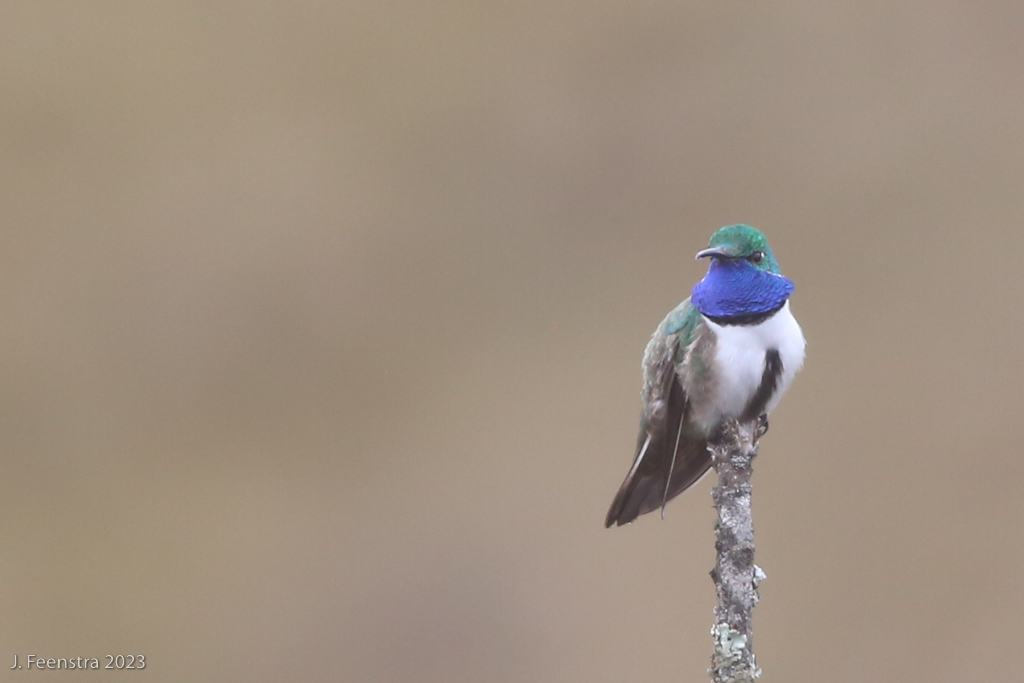
…or, this Blue-throated Hillstar (new to science only 6 years ago) on its favorite stick.
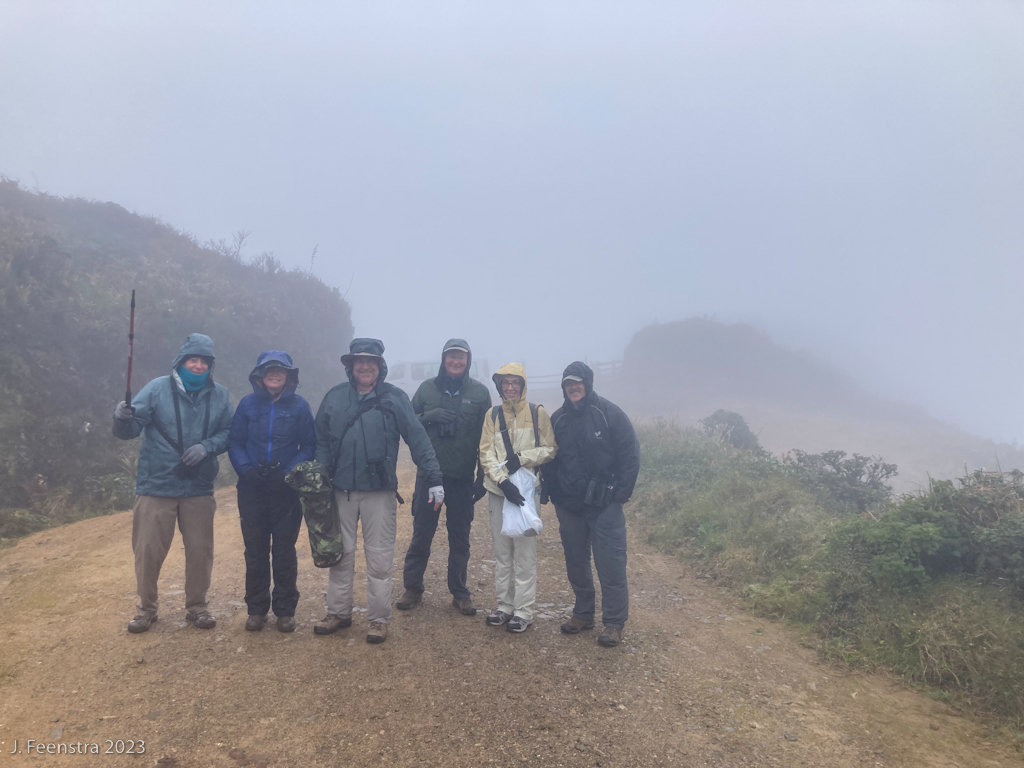
The group was the same. Here they are in cold blowing rain and fog, an occasionally condition of high mountain birding.
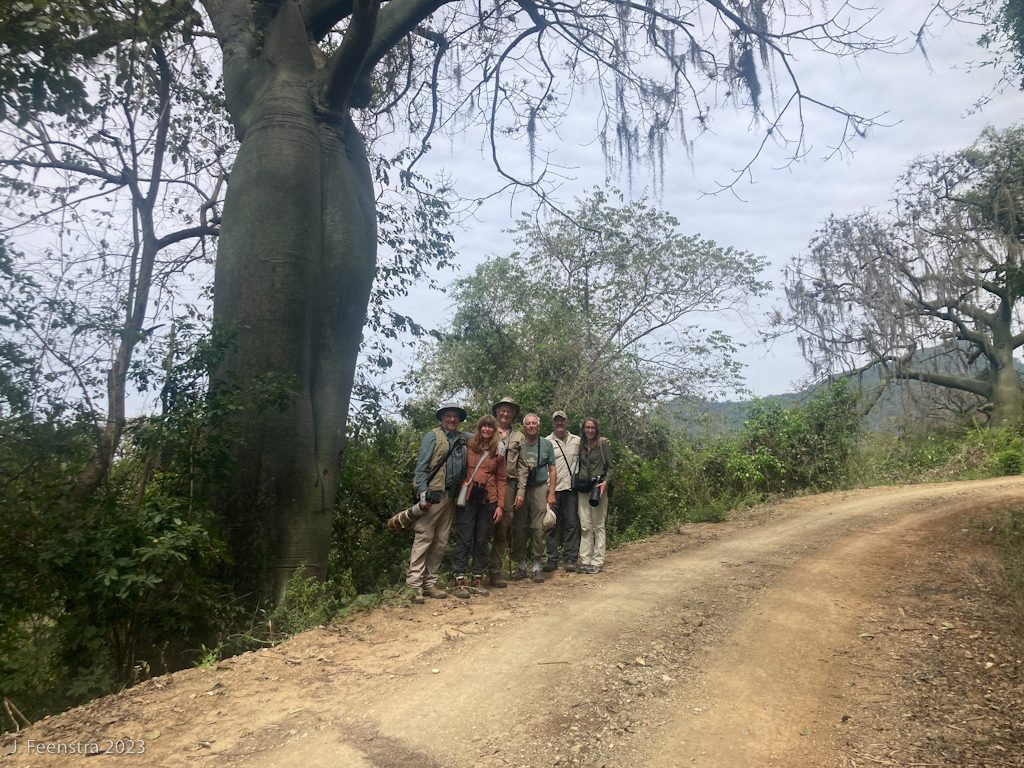
And, looking sharp in better light, and enjoying a nice sunny, dry day.
November 2:
Ethan has just completed a fantastic tour to Ghana
Ghana ranks high on the list of African birding destinations thanks to a combination of having good infrastructure, excellent forest reserves, a well-established birding circuit, and a bird list approaching 800 species. Our October Ghana tour ended with great success, having ten species of kingfishers, eleven species of hornbills, seventeen species of sunbirds, and a number of new species for the tour such as Wahlberg’s Honeyguide (6th record for Ghana), the localized Baumann’s Greenbul, Dorst’s Cisticola, and Fiery-breasted Bushshrike. It comes as no surprise that White-necked Rockfowl ranked first in the group’s Top 5 birds with Blue-moustached Bee-eater, Nkulengu Rail, Red-cheeked Wattle-eye, and Red-fronted Antpecker following close behind. Overall, it was an excellent tour and 2024 can’t come soon enough!
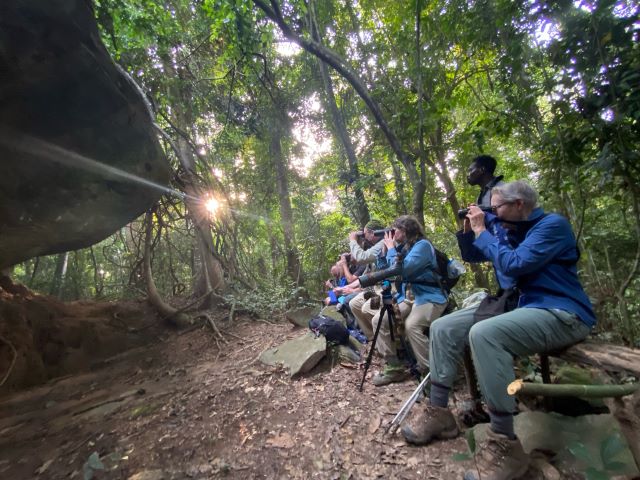
A short walk from our accommodation we arrived at this large boulder in the forest and made ourselves comfortable to wait for the White-necked Rockfowl (Picathartes).
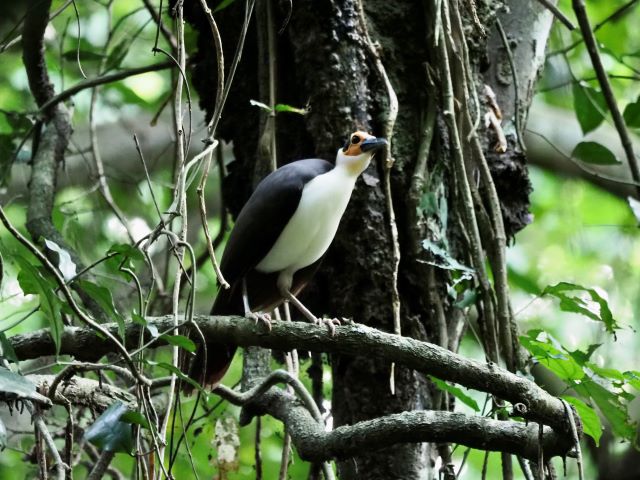
We were treated to excellent views of at least three individuals including this one.
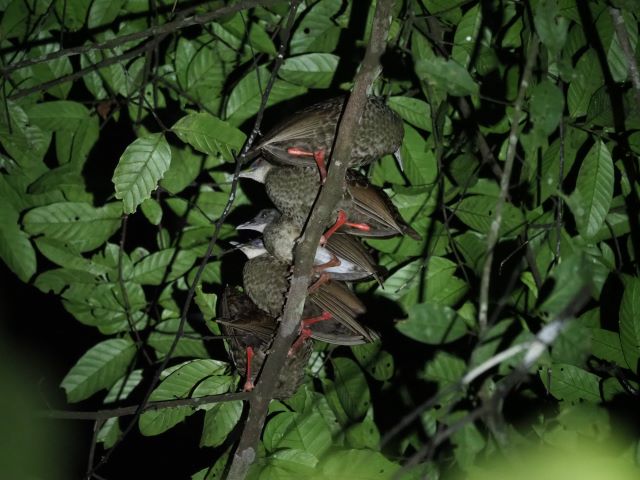
It's always a thrill getting to track down unique and hardly seen birds, especially when they're secretive forest rails. The Nkulengu Rail is named for their onomatopoeic songs and will roost communally high on horizontal branches in West and Central African rainforests.
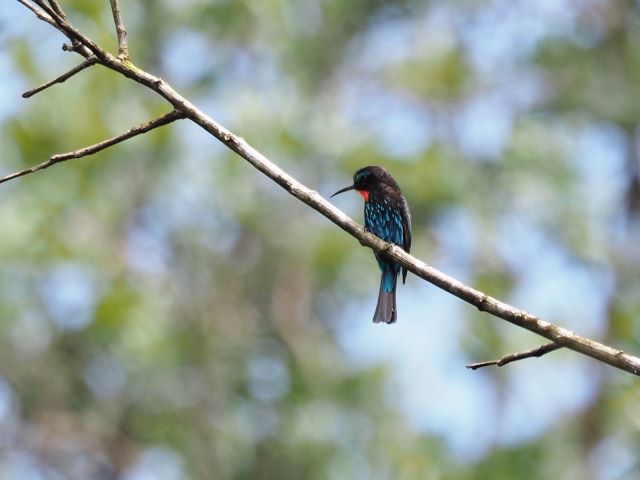
The Black Bee-eater was one of many species of bee-eaters seen on the tour.
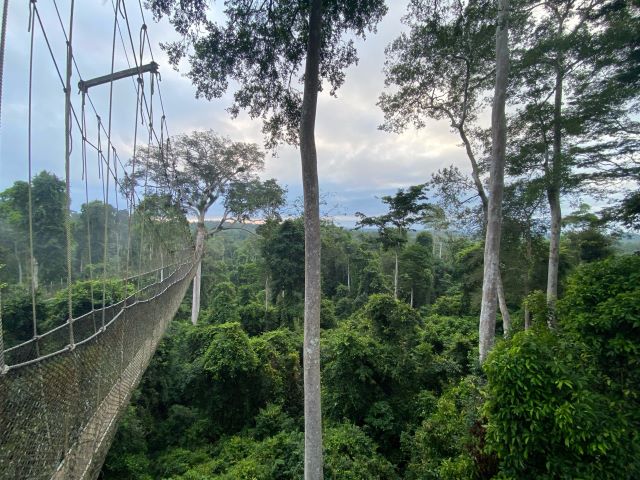
One of the highlights of Ghana is the canopy walkway at Kakum National Park, the only one of its kind in West Africa. Suspended 120 feet over the rainforest, you're rewarded with 360 degree views of the canopy offering an excellent opportunity for viewing species that are typically difficult to see from the ground. Black-casqued and Brown-cheeked Hornbills, Cassin's and Willcocks's Honeyguides, Bristle-nosed Barbets, Violet-backed Hyliota, Rufous-crowned Eremomelas, Ussher's Flycatcher, and Johanna's Sunbird were some of the highlights as was a distant Congo Serpent-Eagle, which could be heard off in the distance.
October 18:
Skye Haas reports from the recent New Jersey: Cape May tour:
I must admit, I was nervous about this tour; showing up in the aftermath of Tropical Storm Idalia was not the most ideal of conditions for a migration tour. The forecast was a never-ending week of east winds, peppered with rain. But I should have remembered, there is ALWAYS something amazing to look at in Cape May! And boy did we start off with a bang too! I don’t quite share some birder’s love of storm birding, more often than not, it just leaves you wet and birdless, but from time-to-time storms do drop in some great birds and we pulled into Cape May on nothing less but a Brown Booby roosting with some cormorants!
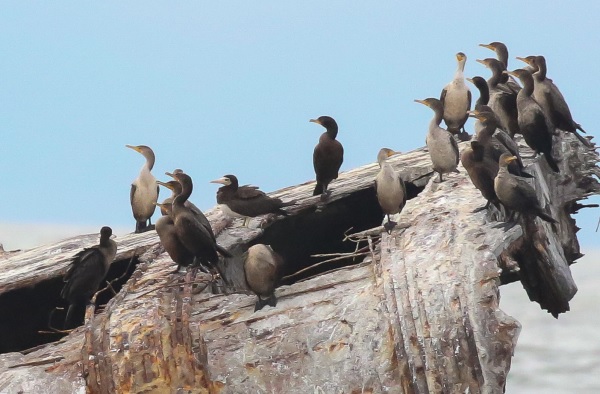
The booby was quite content to sit and let us soak it in and enjoy it!
With the constant east winds, we experienced a lot of high tides, subsequently we enjoyed a lot of great concentrations of shorebirds, as many of them were forced to spend time in the remaining bits of higher ground in the coastal marshes. We did quite well for shorebirds overall, with some of our highlights being Avocets, Stilt and White-rumped Sandpipers, American Oystercatchers, an amazing fallout of Pectoral Sandpipers with hundreds of indvidual's grounded from the storms, and a flyby Hudsonian Godwit.
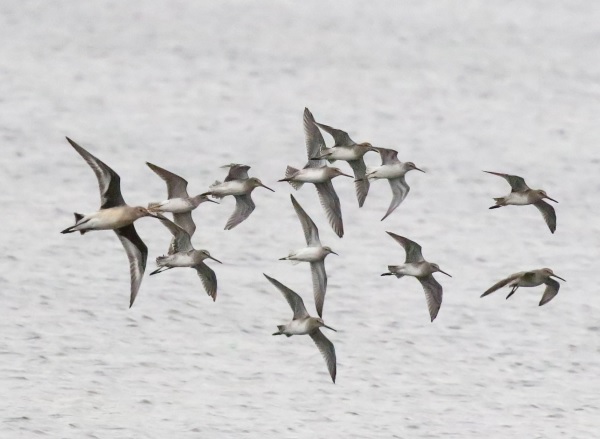
Other waterbirds we did ok with, the group certainly marveled at the flocks of skimmers…
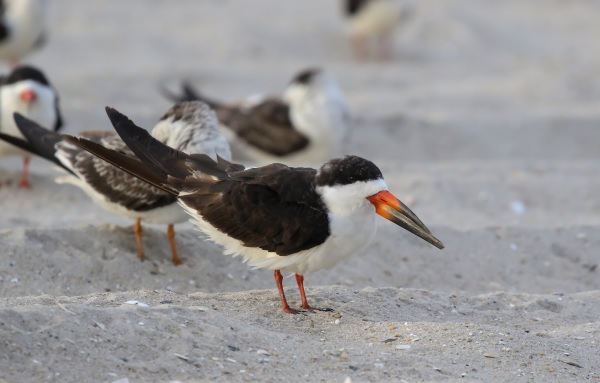
…and conversely shared the agony of trying to identify dabbling ducks in non-breeding plumage. The big flights of scoters that Cape May is renowned for hadn’t really kicked into overdrive yet, but we did have a couple close passes of a few Surf and Black Scoters.
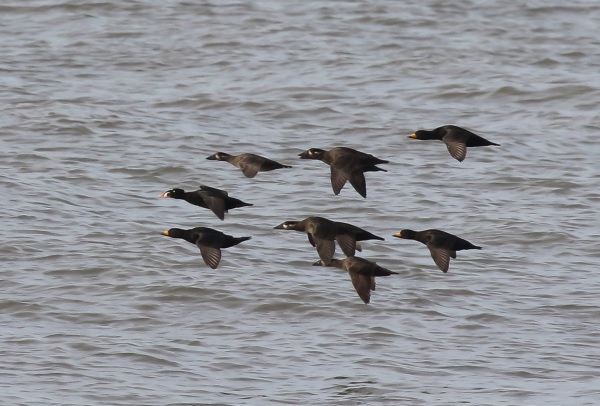
We enjoyed lots of species of terns and even had a Black Tern; like the booby, it was another storm waif and a first ever for the collective list of this tour.
Unfortunately, warblers were a group where we didn’t do too well for. There just were no favorable winds to bring migrants to Cape May. Now that being said, we were treated to several Prairie Warblers…
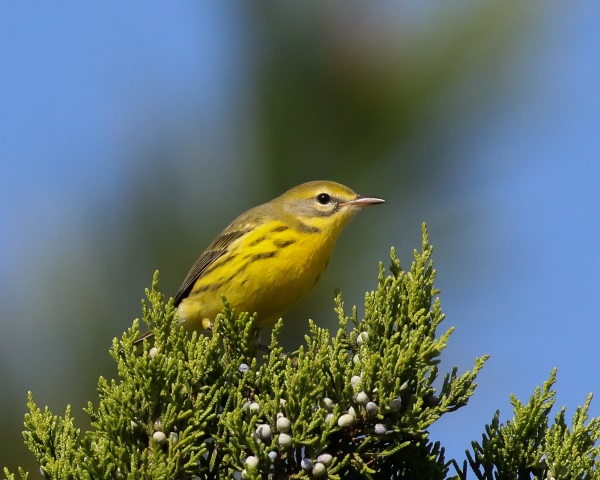
…a local breeding species that normally migrates out of the Cape May area by the time the tour runs. Another special get was a Mourning Warbler, a bird that not only was a new first ever for this tour but my first ever for New Jersey! And of course, no trip to Cape May is complete until we have some time with a Cape May Warbler, which of course we did on a few occasions.
Finally, no trip to Cape May is complete without some time on the hawk deck! Again, east winds aren’t the best for most species of hawks. We did have a trickle of Sharp-shinned and Cooper’s Hawks…
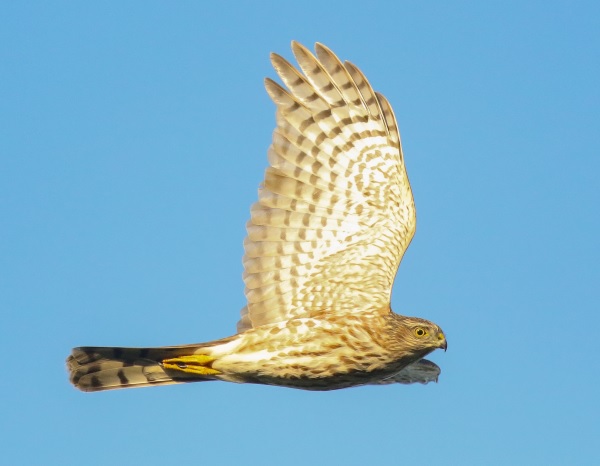
…but the buteos were conspicuously absent. Ospreys of course were omnipresent, but the one group of raptors we did well for, and certainly doesn’t mind an east wind were falcons. We had numerous American Kestrels and Peregrine Falcons, and on one afternoon, were treated to an amazing Merlin migration.

Merlin after Merlin whipped by, sometimes brushing over our heads, while others made swipes through the flock of foraging Tree Swallows, catching one more often than one would expect a swallow to be captured while on the wing! So in retrospect, I shouldn’t have doubted, even in predicted bad weather, there are few places that can beat Cape May as a birding hotpot in the fall!
October 17:
Steve Howell reports from our recent tour to Veracruz, Mexico, where migration truly was a moving experience.
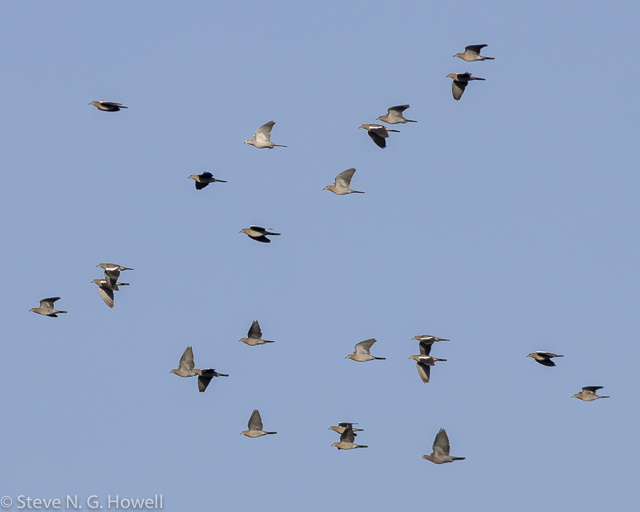
The very first morning we watched thousands of White-winged Doves heading over southward—here a small group ‘carrying’ single Eurasian Collared Dove and Red-billed Pigeon (can you spot them?)
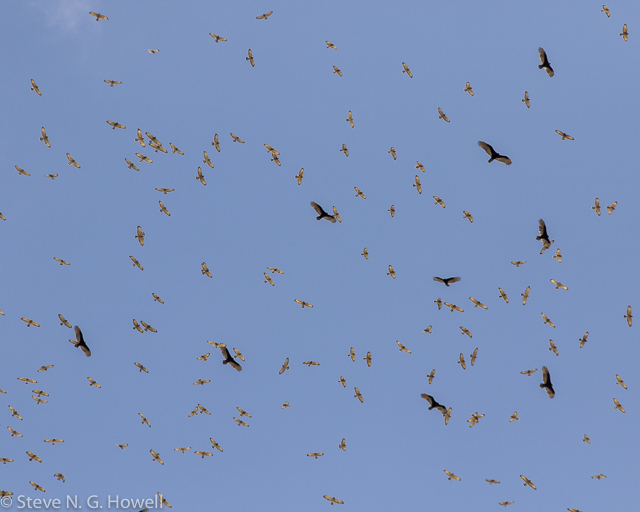
And then we stepped into the deep end of the world-famous ‘River of Raptors’ on a day when 220,000 (!) Broad-winged Hawks were tallied! Here, just a fraction of the spectacle...
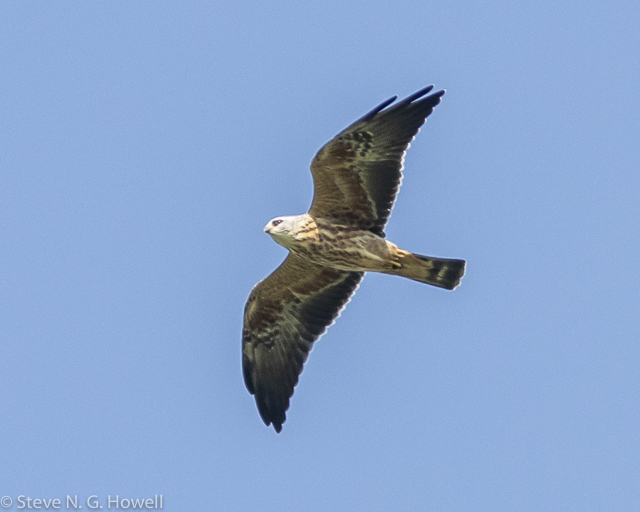
And here a pleasingly low juvenile Mississippi Kite
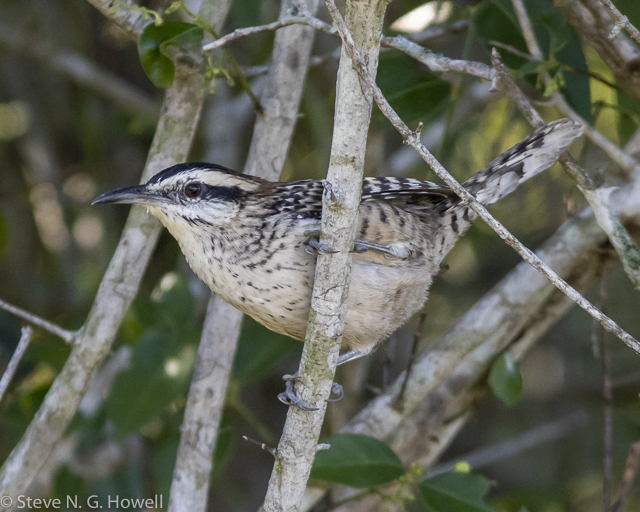
Coastal birding produced great views of the recently split Veracruz (née Rufous-naped) Wren...
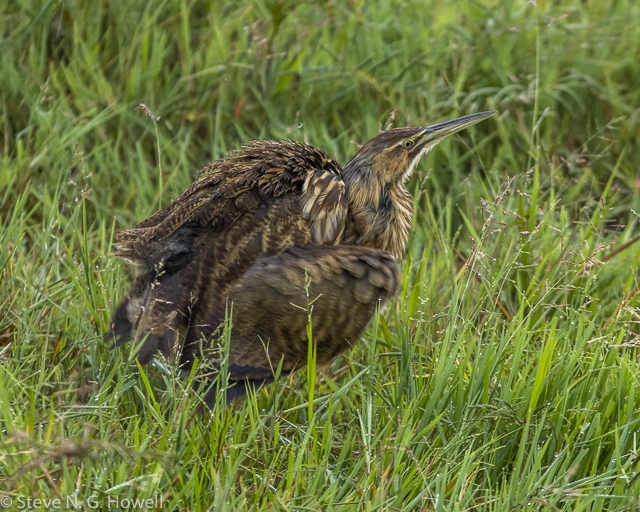
And numerous migrants, including this obliging American Bittern.
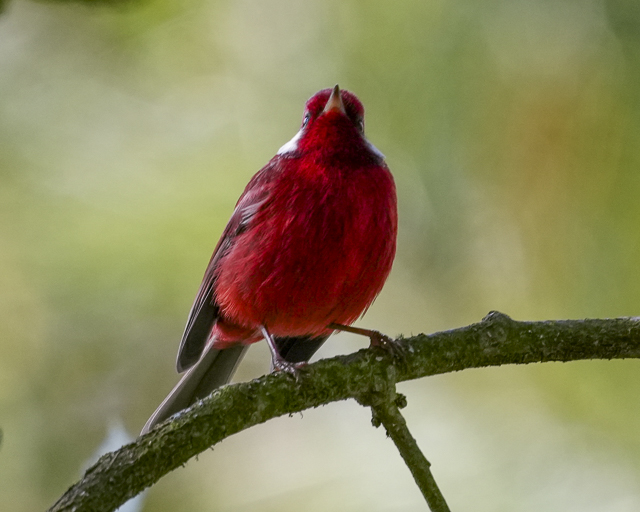
Highland birding showcased another facet of Mexico’s diverse biogeography, from the stunning Red Warbler... Photo by participant Kent Anderson
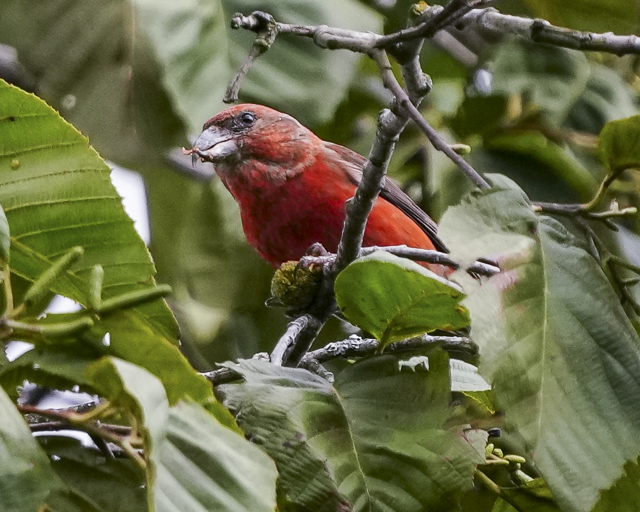
To Red Crossbills (feeding on alders!)... Photo by participant Kent Anderson
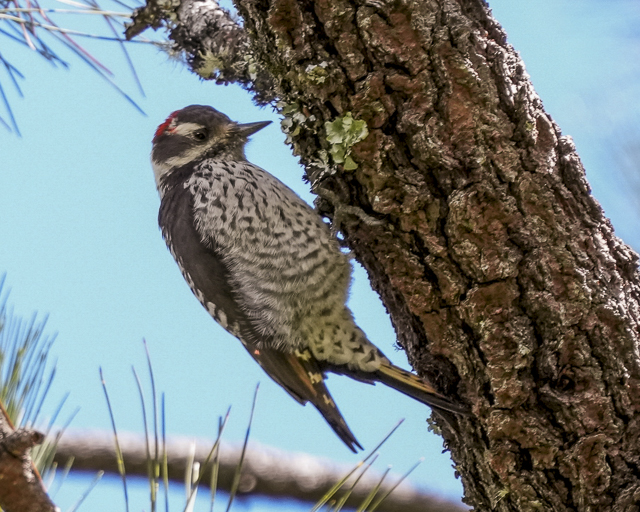
And the highly local (and tiny-billed!) Strickland’s Woodpecker. Photo by participant Kent Anderson
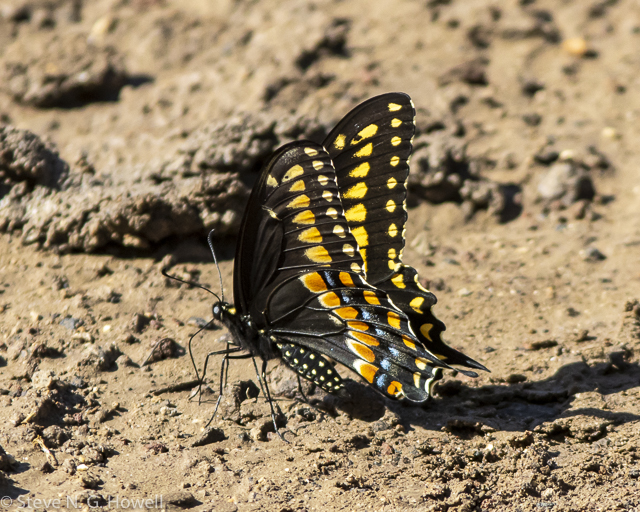
Besides birds everywhere we looked there were other delights, including this handsome Black Swallowtail
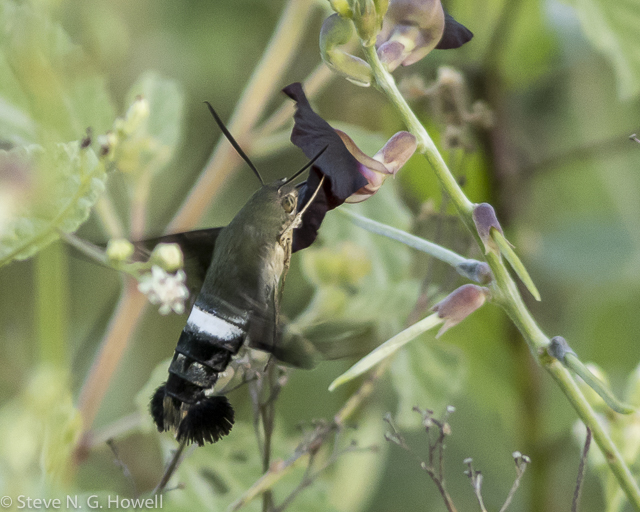
And this hummingbird hawk-moth
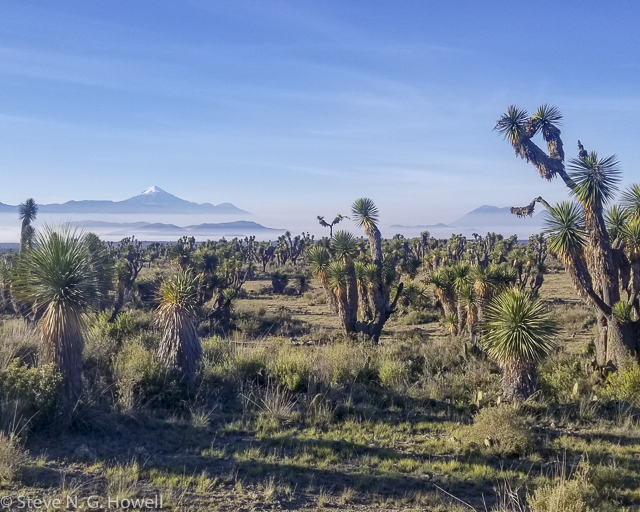
And some spectacular scenery, here high desert Joshua trees with snow-capped Orizaba Volcano in the background, towering above 18,000 feet
October 5:
Ethan Kistler reports from Madagascar
Madagascar ranks high on birders’ list of places to visit and for good reason! On this three-week tour, we visited the dry tropical forests of Ankarafantsika, the baobab-dotted spiny forest of the southwest, succulent woodlands of the interior, and lowland rainforest of the east where we targeted all of the endemic orders and families that occur on the island. We were quite successful, to say the least, having seen all of the mesites, ground-rollers, and the monotypic Cuckoo-Roller, in addition to three of the four asities, and nine of the eleven Malagasy warblers. Vangas, which are no longer considered an endemic family (recently paired with helmetshrikes and allies), were well represented with twenty species recorded. On top of this, we saw a host of chameleons and fourteen species of lemurs, from the diminutive Brown Mouse Lemur to the impressive Indri along with the iconic Ring-tailed Lemur. Overall, it was a very successful tour!
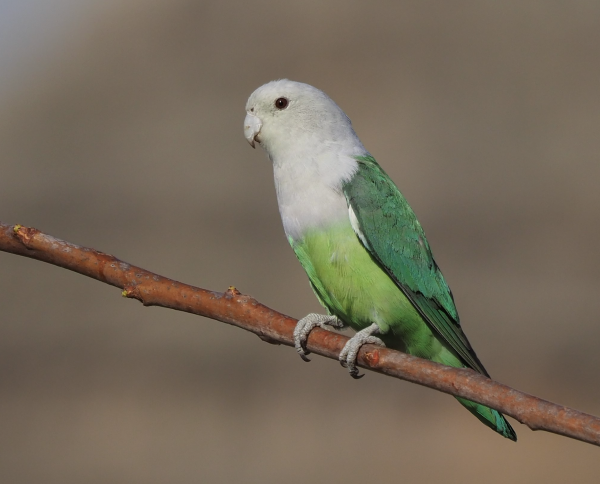
Gray-headed Lovebirds were common at our accommodation outside Isalo National Park. The Gray-headed is the only lovebird not found on mainland Africa.
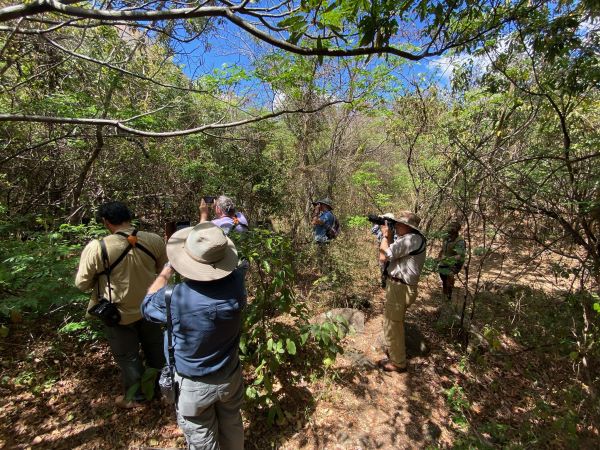
The group enjoying closeup views of Ring-tailed Lemurs.
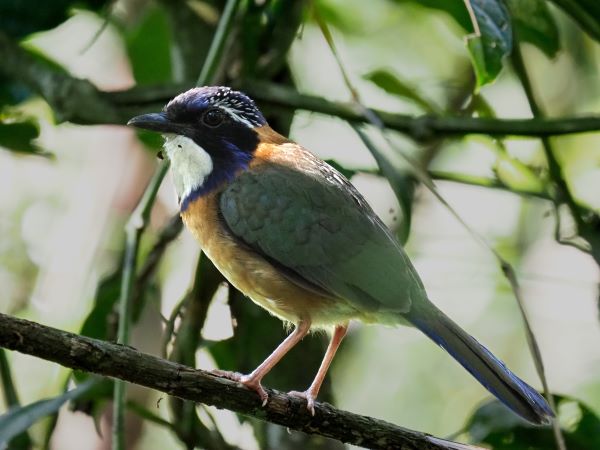
Pitta-like Ground-Roller is one of the five species of ground-rollers, an endemic family to Madagascar. We successfully completed the whole family.
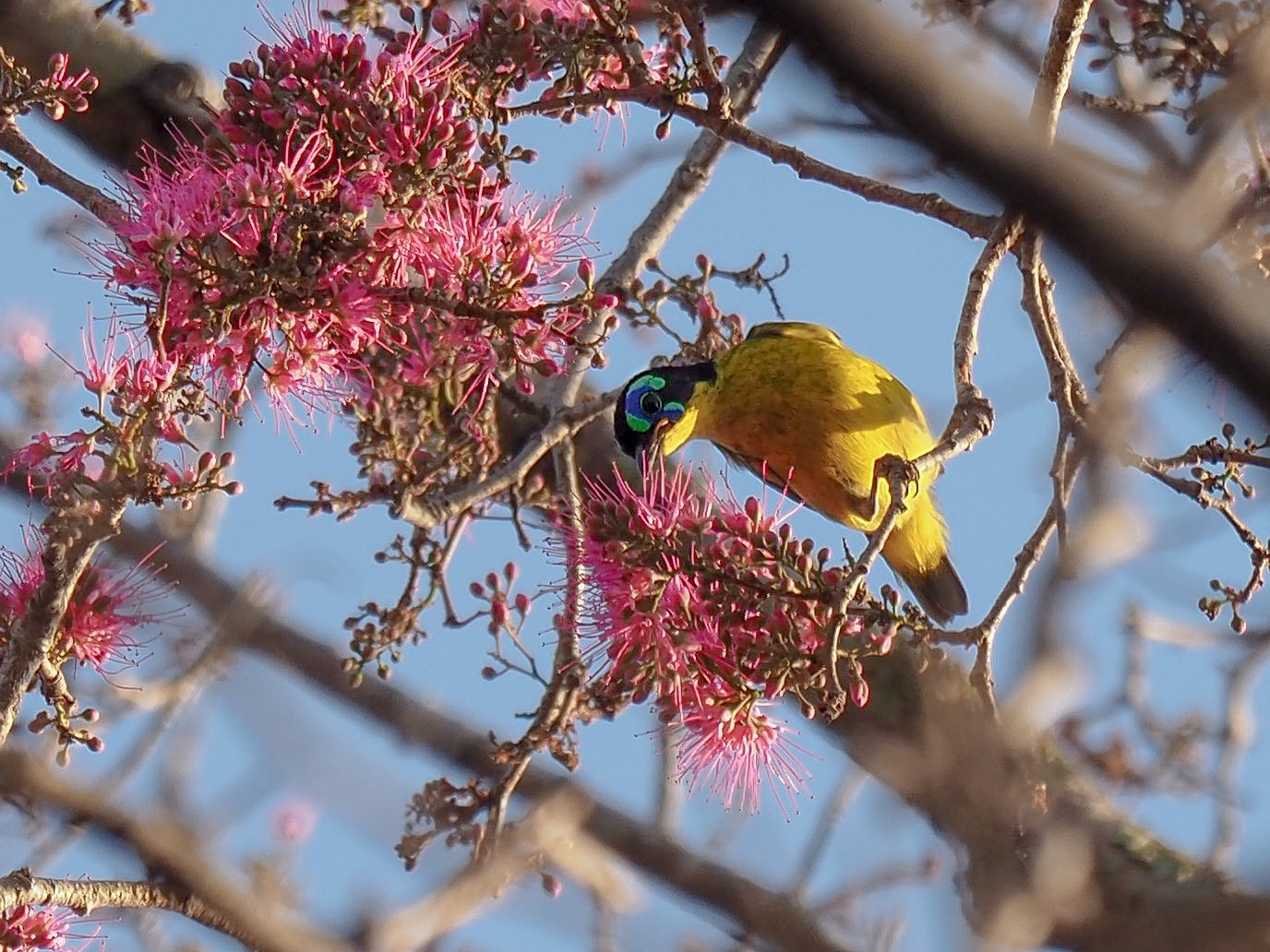
This male Schlegel’s Asity was one of several visiting a fruiting tree in Ankarafantsika.
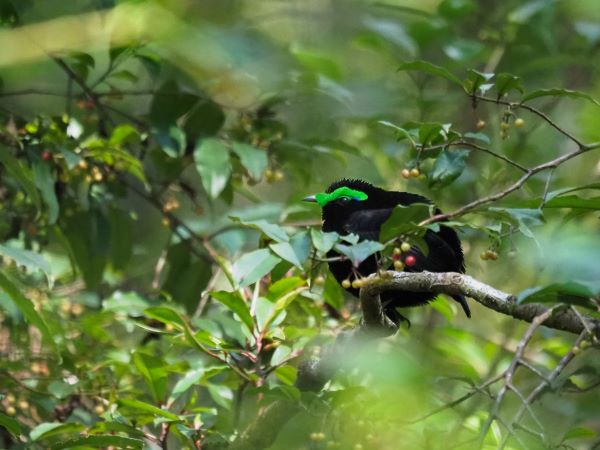
This male Velvet Asity posed nicely while a female foraged nearby.
